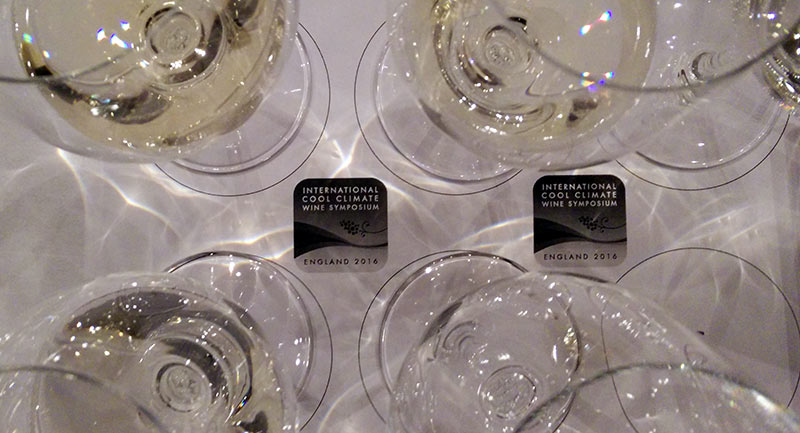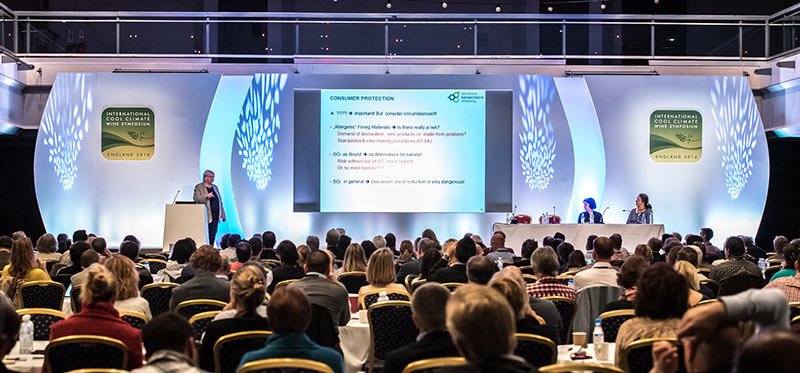It seems I have a never-ending treasure trove of articles from the ICCWS 2016 held in Brighton this past May. There was one session that was particularly interesting (well, maybe really) and it was about yeast. Yes, yeast. That generally boring little organism that turns grape juice in to wine and for some reasons vegans seem to forget means that they shouldn’t be drinking wine as it’s made from an animal dying.
Traditionally we’ve just thought of of yeast as that thing which eats the sugar in the grapes and producing carbon dioxide and that other delicious thing, alcohol. Naturally as we put the Stone Age further and further behind us, we’re starting to learn that yeast does much more than that and is responsible for a myriad of flavor attributes to the wine. To help illustrate this point, for this session they set out 15 different wines made with five different yeasts. In doing this, they used something like 1,000 glasses so hats off to the organizers as much as the panel!
The five standard yeasts were IOC 18-2007 (an industry standard) and PDM (a commercial hybrid) and then three other experimental hybrids that cross the standard Saccharomyces Cerevisiae with other Saccharomyces to produce: AWRI 1502, AWRI 1571, and AWRI 2526. I don’t expect these numbers to really mean a damned thing to anyone (as they sure don’t to me) but I just wanted to put them out there for the truly nerdy.
We tasted through all the wines and then the chair of the session, Jenny Bellon from the University of Adelaide told us about the yeasts and the experiments they’ve been doing. This followed with a number of genetic marker charts and other items that again, were for the truly scientific folks in the room. But, here’s the kicker, the wines were from the cellars of Bolney (Chardonnay & Pinot Noir) and Gusborne (Chardonnay) in the UK, Plumpton University (Chardonnay), and then the Yalumba cellar in Tasmania (Pinot Noir). So essentially each of the three wines from each cellar (two in the case of Bolney) we tasted were actually the same base wine but each yeast had radically different taste profiles.
They had us give a show of hands as to which of the wines were preferred and the AWRI 2526 was a continual crowd favorite and this was despite the wines it was used on coming from opposite ends of the earth. Think about that for a moment as despite different climates, soils, cellars etc, the yeast made a wine in disparate locals with similar traits.
This goes a long way toward tossing a dirt clod in the face of some people who have idiotically stated that “commercial yeast are the only true way to taste a terroir” as this shows the opposite. The yeast can completely change the entire profile of the wine and it’s one of the reasons I’ve been such a fan of ambient yeast fermentation as your local yeast strains actually are the terroir more than anything else.
Work in the field is continually ongoing and I’m wondering if we’ll arrive at a point where instead of people searching out varietal labeling (as in, “Oh, I love love love Pinot!”) we’ll be looking for yeast labeling. Can you imagine that? One day a woman calling her husband at the store as he bumbles his way through the shopping list to tell him, “Sweetie, I’m really in the mood for the AWRI 2526 tonight because I’m just so tired of the IOC 18-2007 at this point.”
It’s coming, I can see it.




So was AWRI 2526 a commercial or indigenous yeast? and what flavours did it enhance? I find yeast fascinating – would be great (for us wine geeks) to know what yeast when tasting
Dammit, I knew (hoped?) if I put this up someone would ask something more sciencey about it. As I understood it, AWRI 2526 (Australian Wine Research Institute) is an experimental hybrid of Saccharomyces Cerevisaiae and Saccharomyces Mikatae.
To me it created a more “pleasing” wine, rounder mouthfeel, crisper acidity, and more balanced flavors across the palate. I can’t find my chicken scratch on the session but I think that Jenny said something similar and that it’s been a general crowd pleaser when they’ve done analytic tastings.
Fascinating! I did a Laffort tour of Spain a few years back where we showed a range of the same base wine with a whole series of different yeasts showing winemakers how they could ‘design’ different wines. Very un-natural wine etc. I should make more notes on what yeast is being used.